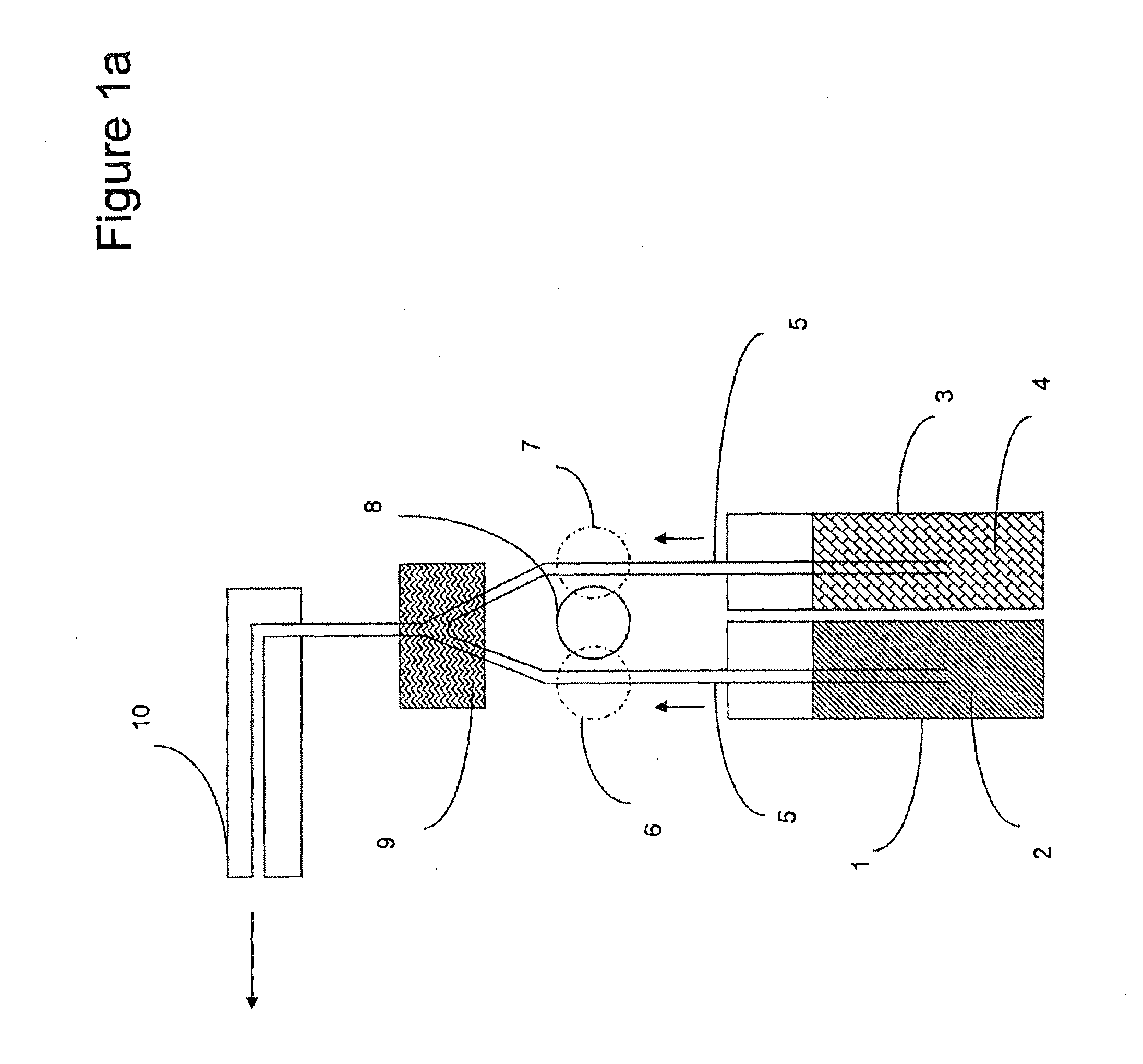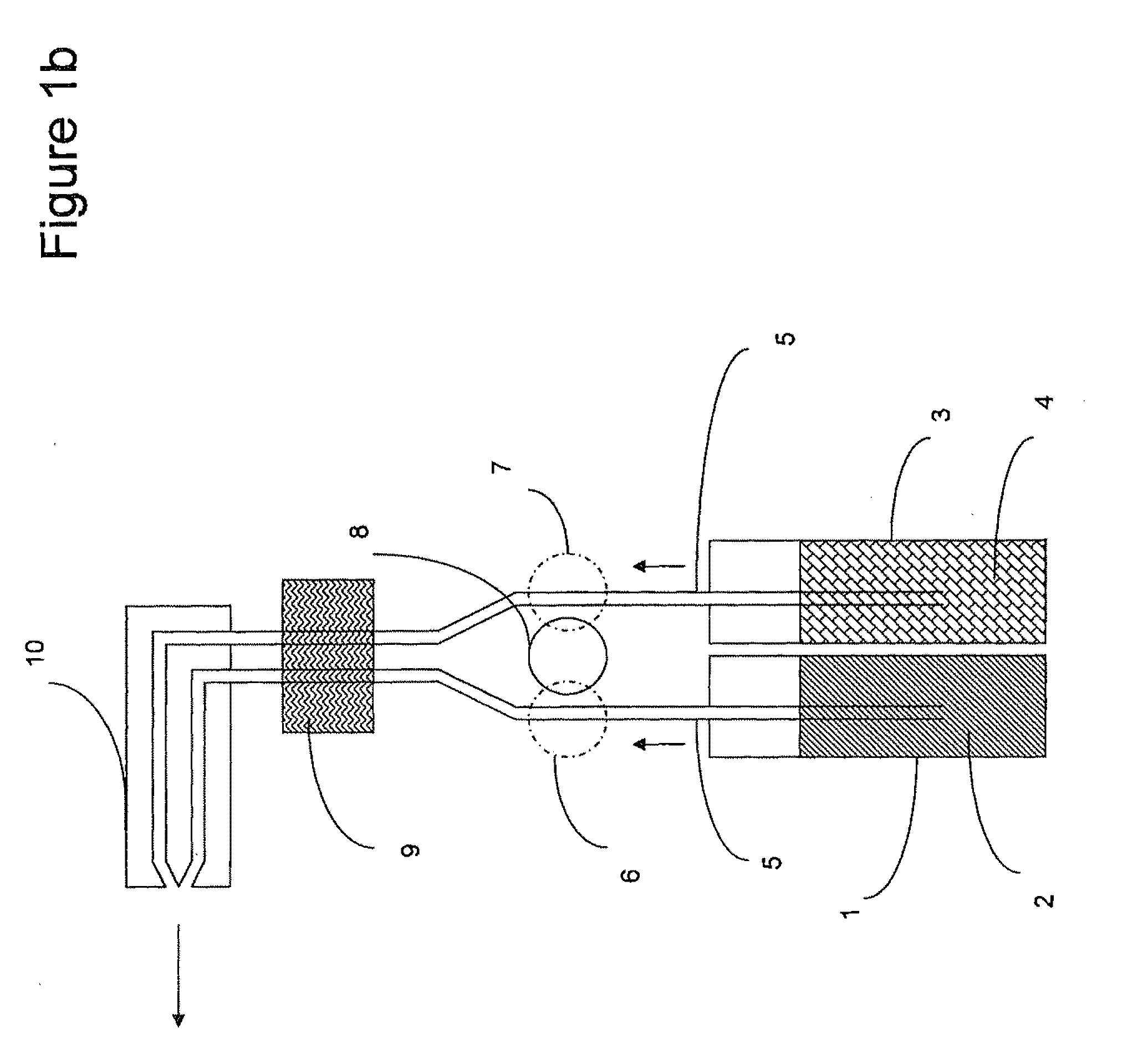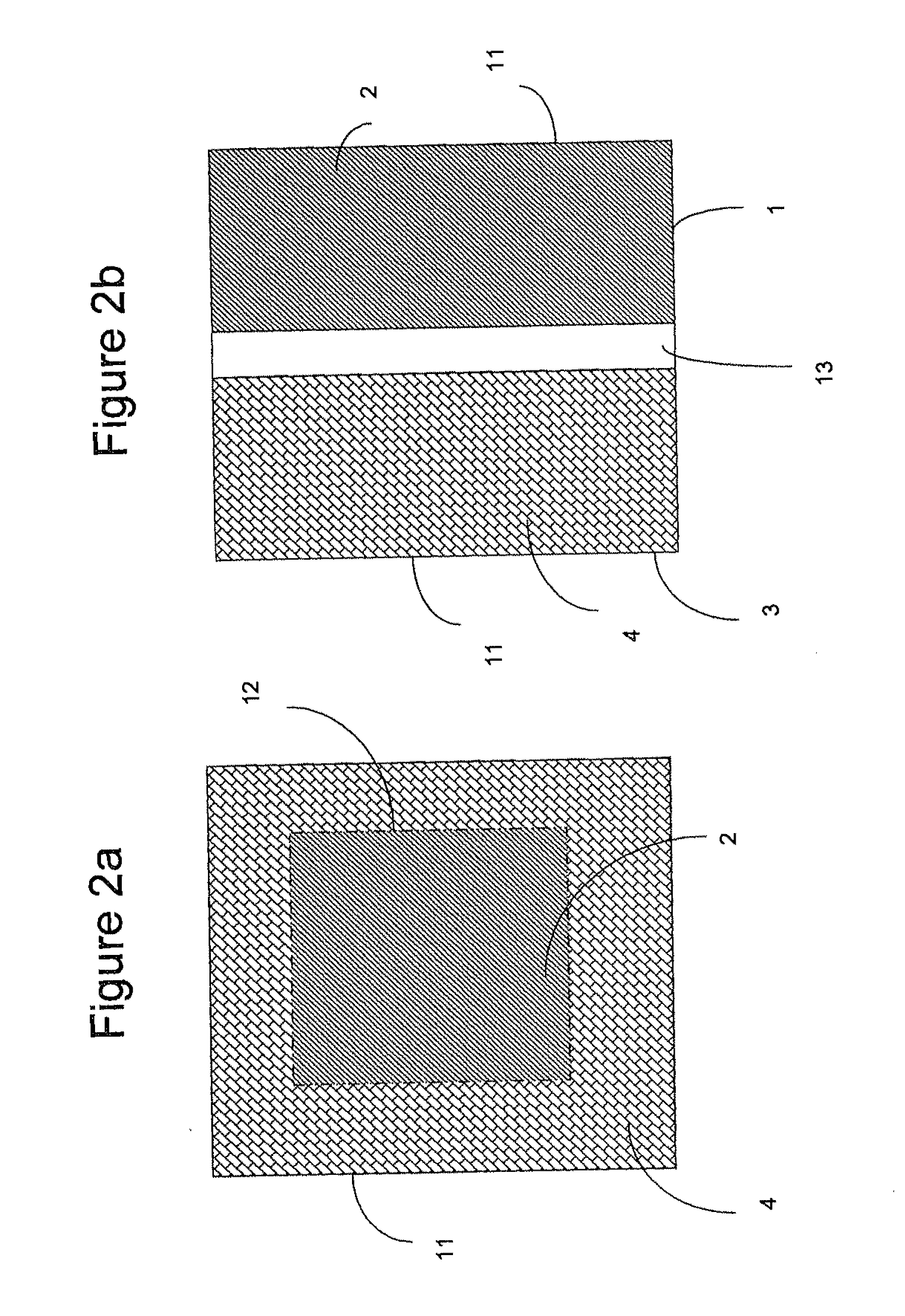Multi-component peracid generation system
a generation system and multi-component technology, applied in textiles and papermaking, enzymology, disinfection, etc., can solve the problems of complex structure, high cost, and high cost of carboxylic acid ester, and achieve the effect of improving mixing characteristics and improving storage stability
- Summary
- Abstract
- Description
- Claims
- Application Information
AI Technical Summary
Benefits of technology
Problems solved by technology
Method used
Image
Examples
example 1
Construction of a katG Catalase Disrupted E. coli Strain
[0323]The coding region of the kanamycin resistance gene (kan; SEQ ID NO:26) was amplified from the plasmid pKD13 (SEQ ID NO:27) by PCR (0.5 min at 94° C., 0.5 min at 55° C., 1 min at 70° C., 30 cycles) using primers identified as SEQ ID NO:28 and SEQ ID NO:29 to generate the PCR product identified as SEQ ID NO:30. The katG nucleic acid sequence is provided as SEQ ID NO:31 and the corresponding amino acid sequence is SEQ ID NO:32. E. coli MG1655 (ATCC® 47076™) was transformed with the temperature-sensitive plasmid pKD46 (SEQ ID NO:33), which contains the λ-Red recombinase genes (Datsenko and Wanner, (2000), PNAS USA 97:6640-6645), and selected on LB-amp plates for 24 h at 30° C. MG1655 / pKD46 was transformed with 50-500 ng of the PCR product by electroporation (BioRad Gene Pulser, 0.2 cm cuvette, 2.5 kV, 200 W, 25 μF), and selected on LB-kan plates for 24 h at 37° C. Several colonies were streaked onto LB-kan plates and incubate...
example 2
Construction of a katE Catalase Disrupted E. coli Strain
[0324]The kanamycin resistance gene (SEQ ID NO:26) was amplified from the plasmid pKD13 (SEQ ID NO:27) by PCR (0.5 min at 94° C., 0.5 min at 55° C., 1 min at 70° C., 30 cycles) using primers identified as SEQ ID NO:37 and SEQ ID NO:38 to generate the PCR product identified as SEQ ID NO:39. The katE nucleic acid sequence is provided as SEQ ID NO:40 and the corresponding amino acid sequence is SEQ ID NO:41. E. coli MG1655 (ATCC® 47076™) was transformed with the temperature-sensitive plasmid pKD46 (SEQ ID NO: 33), which contains the λ-Red recombinase genes, and selected on LB-amp plates for 24 h at 30° C. MG1655 / pKD46 was transformed with 50-500 ng of the PCR product by electroporation (BioRad Gene Pulser, 0.2 cm cuvette, 2.5 kV, 200 W, 25μF), and selected on LB-kan plates for 24 h at 37° C. Several colonies were streaked onto LB-kan plates and incubated overnight at 42° C. to cure the pKD46 plasmid. Colonies were checked to confi...
example 3
Construction of a katG Catalase and katE Catalase Disrupted E. coli Strain (KLP18)
[0325]The kanamycin resistance gene (SEQ ID NO:26) was amplified from the plasmid pKD13 (SEQ ID NO:27) by PCR (0.5 min at 94° C., 0.5 min at 55° C., 1 min at 70° C., 30 cycles) using primers identified as SEQ ID NO:37 and SEQ ID NO:38 to generate the PCR product identified as SEQ ID NO:39. E. coli MG1655 KatG1 (EXAMPLE 1) was transformed with the temperature-sensitive plasmid pKD46 (SEQ ID NO:33), which contains the λ-Red recombinase genes, and selected on LB-amp plates for 24 h at 30° C. MG1655 KatG1 / pKD46 was transformed with 50-500 ng of the PCR product by electroporation (BioRad Gene Pulser, 0.2 cm cuvette, 2.5 kV, 200 W, 25 μF), and selected on LB-kan plates for 24 h at 37° C. Several colonies were streaked onto LB-kan plates and incubated overnight at 42° C. to cure the pKD46 plasmid. Colonies were checked to confirm a phenotype of kanR / ampS. Genomic DNA was isolated from several colonies using t...
PUM
| Property | Measurement | Unit |
|---|---|---|
| solubility | aaaaa | aaaaa |
| concentration | aaaaa | aaaaa |
| peroxycarboxylic acid generation | aaaaa | aaaaa |
Abstract
Description
Claims
Application Information
 Login to View More
Login to View More - R&D
- Intellectual Property
- Life Sciences
- Materials
- Tech Scout
- Unparalleled Data Quality
- Higher Quality Content
- 60% Fewer Hallucinations
Browse by: Latest US Patents, China's latest patents, Technical Efficacy Thesaurus, Application Domain, Technology Topic, Popular Technical Reports.
© 2025 PatSnap. All rights reserved.Legal|Privacy policy|Modern Slavery Act Transparency Statement|Sitemap|About US| Contact US: help@patsnap.com



